The Occurrence, Architectures, and Correlations of AMD-Stable Planetary Systems
- 1Department of Astronomy & Astrophysics, The Pennsylvania State University, State College PA, United States of America
- 2Department of Physics & Astronomy, Brigham Young University, Provo UT, United States of America
The Kepler mission revealed thousands of exoplanet candidates, providing key insights into the distributions and demographics of planetary systems. Many of these planets are in multiple-transiting planet systems, which yield additional information about the correlations within planetary systems and their architectures. However, these properties are shrouded by complex detection biases, which must be properly accounted for in order to disentangle the intrinsic system architectures from the observational biases.
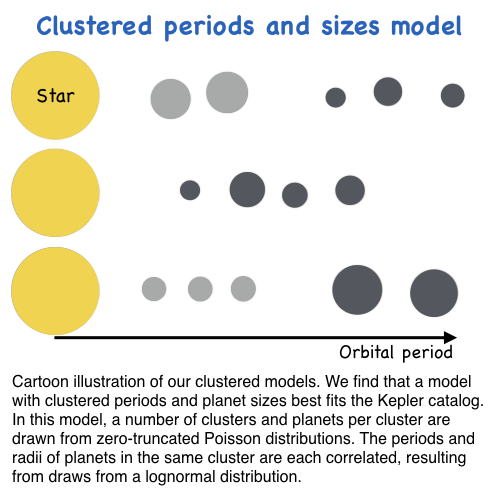
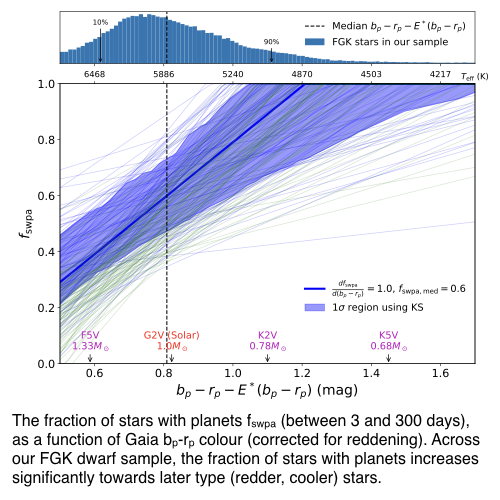
In He, Ford, & Ragozzine (2019, 2020), we developed an advanced forward model (SysSim) to infer the intrinsic distributions of planetary systems around FGK dwarfs, by constructing parametric models for drawing planetary systems, simulating the Kepler detection efficiency to produce synthetic observed catalogs, and comparing these catalogs to the Kepler catalog. We show that planetary systems around FGK dwarfs are clustered in periods and in sizes, as evidenced by fitting to the observed distributions of multiplicities, period ratios, and transit depth ratios. We also find that the fraction of stars with planets (with Rp > 0.5 R⊕ and 3d < P < 300d) increases significantly towards later type (cooler) stars, rising by over a factor of two from early F to mid K dwarfs. The observed multiplicity distribution can be well matched by two populations consisting of a low and a high mutual inclination component (a Kepler dichotomy).
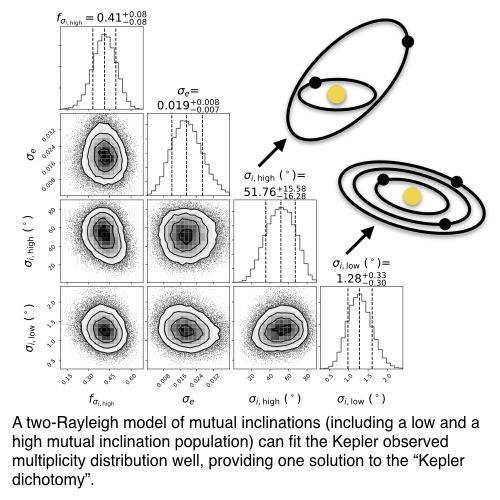
Here, I will also present a new model to show that a broad distribution of eccentricities and mutual inclinations arising from systems at the angular momentum deficit (AMD) stability limit can also reproduce the observed population. The AMD stability limit provides a dynamically motivated view of orbital architectures and serves to constrain the high mutual inclination systems. In our new model, we distribute the maximum AMD of each multi-planet system amongst the planets and show that this results in a multiplicity-dependent distribution of eccentricities and mutual inclinations. Systems with intrinsically more planets have lower eccentricities and mutual inclinations. For each intrinsic multiplicity order, the distributions of eccentricities and mutual inclinations are close to lognormal, instead of the previously assumed Rayleigh distributions. This trend with multiplicity arises from the dependence of the critical AMD on the minimum period ratio in the system, as systems with tightly-spaced planets must have low AMD in order to remain long-term stable. We also find evidence that intrinsic single planets have higher eccentricities than multi-planet systems, although their distribution is not well constrained. I will show that there is evidence for these trends with multiplicity in the Kepler distributions of circular-normalized transit durations and transit duration ratios.
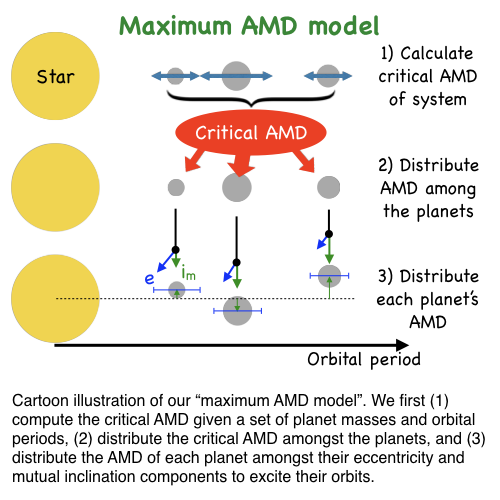
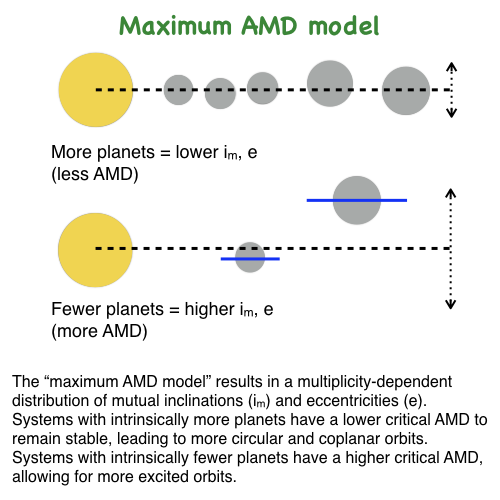
Our code for simulating planet catalogs from our state-of-the-art models is available publicly. We share simulated catalogs of both intrinsic systems and observed (under a Kepler-like mission) systems. These catalogs can be used to inform radial velocity follow-up efforts in the search for additional planet companions in systems with transiting planets, such as those discovered by the TESS mission. Our models can also be used as a point of comparison with planet formation simulations, and for future studies of planetary system architectures.
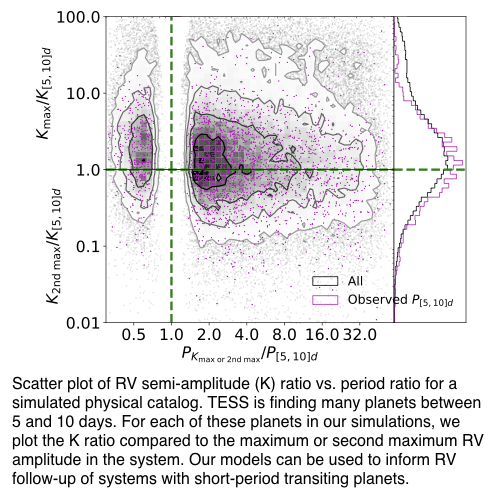
How to cite: He, M., Ford, E., and Ragozzine, D.: The Occurrence, Architectures, and Correlations of AMD-Stable Planetary Systems, Europlanet Science Congress 2020, online, 21 September–9 Oct 2020, EPSC2020-531, https://doi.org/10.5194/epsc2020-531, 2020

